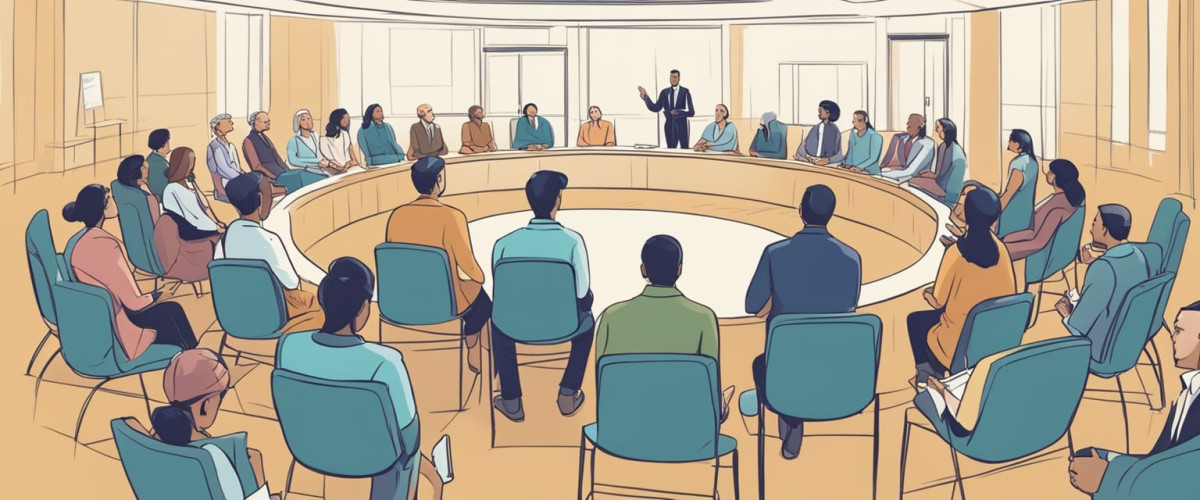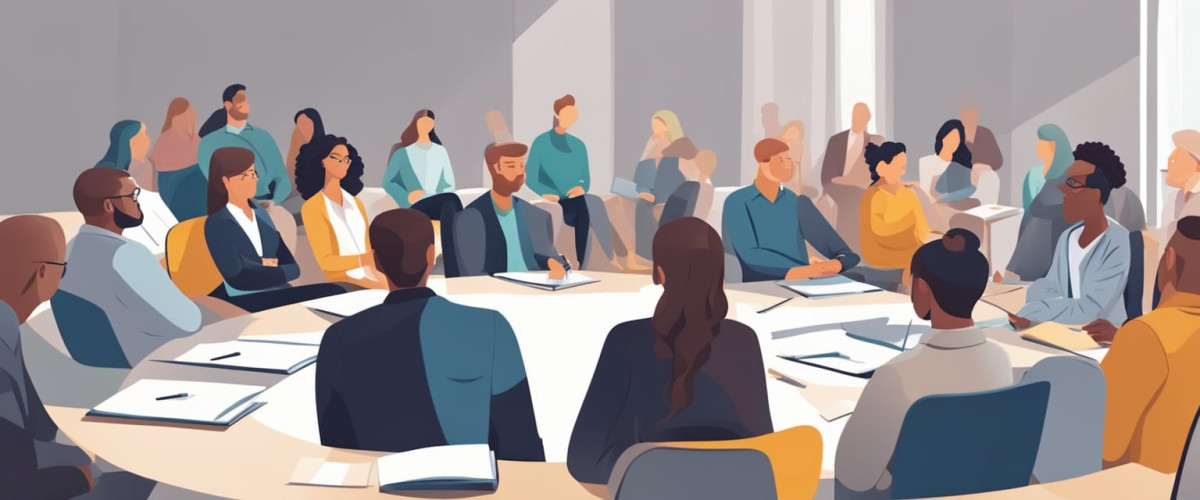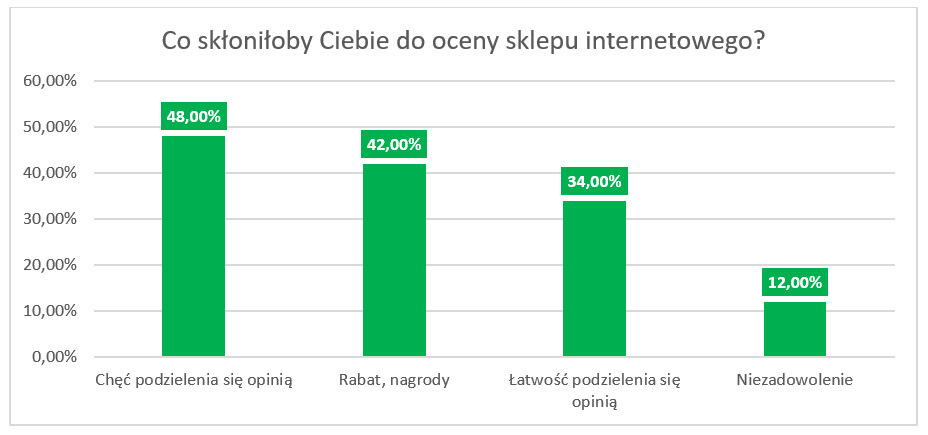- Research platform
Sources of information
Data analysis
Actions
- Solutions
For whom
Problems / Issues
- Materials
Materials
- About us
About us
Customers around the world clearly feel the need to be heard by the companies they interact with. This modern expectation stems from consumers' growing awareness of their influence in shaping products and services. In the digital age, where the possibilities for communication are virtually limitless, consumers want not only to purchase goods, but also to influence the decisions of companies, and their voice, research suggests, is of paramount importance to them.

Building relationships with customers is a process that requires not only selling valuable products, but also earning trust through dialogue and understanding. A company that actively listens to its customers thus builds trust and is able to better tailor its services to the market, resulting in increased customer loyalty and satisfaction. Listening to consumers is also a way to identify their needs and expectations toward continuous improvement of the solutions offered.
Meeting customer demands in the area of communication, according to experts, is as important as providing quality products. In an era of increasing competition, clear and effective communication with customers can determine a company's competitive advantage. Be aware that customers value transparency and honesty - aspects that contribute to building a lasting relationship with a brand.

Active listening in customer service is a key element that has a positive impact on understanding customer needs, building trust and the effectiveness of personalized communication.
In the context of customer service, active listening involves fully focusing on the customer's statements. This allows service personnel not only to understand the words literally, but also to catch the context and emotions surrounding the message. Examples include maintaining eye contact and asking open-ended questions, which fosters a deeper understanding of the issues they raise.
Customer trust is built by demonstrating that their opinions and concerns are truly being listened to and treated with full commitment. The ability to actively listen often found on lists of customer service skills, LiveAgent suggests, is gaining importance as an essential element for building an atmosphere of trust and long-term customer relationships.
Personalizing communication means tailoring responses and solutions to the individual needs of each customer. Active listening to the customer and additional techniques, such as paraphrasing or summarizing, help confirm understanding of the problem and make it clear that each customer is treated as a unique individual with his or her own needs. As a result, as indicated in the RankTracker ranking source materials, effective customer service becomes more personalized and efficient.

Customers have specific expectations of brands that go beyond the product itself. Crucial to them is how the brand communicates and responds to their needs.
Customers expect brands to be professional in every aspect of their operations. From the quality of the product, to the aesthetics of presentation, to business ethics and conduct in accordance with generally accepted standards. Professionalism also means delivering on promises and providing a consistent and coherent experience at every point of contact. The customer feels whether their needs are put first.
In the digital age, where almost every piece of information is at their fingertips, customers expect fast and effective communication from brands. They want real-time access to information about products and services, and expect any inquiries or issues to be addressed without undue delay.
It's not just a matter of providing answers, but also of showing understanding and empathy toward the customer. Active listening means taking an interest in customers' opinions and needs, and adapting products and services in accordance with the feedback received from consumers. Brands that focus on active listening gain in the eyes of customers, which can be a key element in building loyalty. Ask open-ended questions and you will get to know the customer and their opinions.
Companies use a variety of techniques to understand what their customers want and their experience with the products or services they offer. The following methods allow you to gather valuable information that contributes to a user-centered strategy.
Satisfaction surveys are a common feedback method that allows companies to ask targeted questions about a specific service or product. They have become an indispensable component for measuring customer satisfaction and responding quickly to any irregularities.
Social media, as platforms for interacting with consumers, offer an extremely valuable stream of feedback. They allow companies to monitor comments and posts, giving direct insight into customer opinions and their expectations of the brand.
Any data that comes from customer service interactions, whether from phone calls, emails or chats, is a source of insight into the problems customers are experiencing. By processing this data, companies can identify common problems and behavioral patterns of their clientele.

In the digital age, communication between companies and customers is evolving, becoming increasingly automated and personalized through advanced technologies.
Chatbots are changing the face of customer service. They are programs used to simulate conversations with users, often using artificial intelligence to interpret and respond to user inquiries. For example, in many companies, in addition to the standard live chat, chatbots take up communication after business hours, offering basic support and information.
Chatbots can also automate a variety of tasks, from handling simple inquiries to advanced processes such as placing orders or managing complaints. For example, they can facilitate service bookings or provide product information without the need for an employee.
CRM (Customer Relationship Management) systems are essential tools in the process of communicating with customers. They make it easier to manage customer contact by identifying, reaching out and increasing engagement.
In addition, data analysis tools help understand customer preferences and behavior, enabling companies to tailor communications. Used appropriately, data can better address customer needs, as well as offer solutions and alternatives in line with expectations. The way you analyze data and interact with customers can directly influence the building of lasting relationships and customer loyalty.

Effective customer listening is a key part of any company's strategy to build loyalty and increase consumer satisfaction. Following specific strategies can significantly improve the quality of service.
Soft skills training is essential for employees to properly listen and respond to customers. Active listening is a tool to understand and better address customer expectations. Companies often hold workshops where employees learn how to correctly interpret customers' nonverbal messages and how to ask open-ended questions that can help them more accurately identify a customer's need.
Precise establishment of customer service standards is equally important. Adopting clear guidelines for communicating and responding to customer feedback helps maintain consistency across all employees. This, in turn, results in a better perception of the brand by customers. For example, creating call scripts and procedures in place during customer interactions can make sure that every conversation is conducted to the highest standards.

Good practices in listening to customers can make a significant difference in brand perception and commercial success. The following are specific strategies used that have helped build strong customer relationships.
In the context of case studies, companies often document situations in which they successfully address customer needs. For example, a company specializing in customer service describes how a change in procedures and the introduction of additional training for staff contributed to increased customer satisfaction. Listening to customer feedback here led to the identification and resolution of chronic problems.
Analyzing market successes shows that companies with good customer relations often outperform their competitors.
Effective crisis management and competent complaint handling are essential to maintaining customer confidence. They determine a company's ability to respond to and manage difficult situations in a constructive manner.
Companies should develop clear procedures for handling difficult situations that help the team remain calm and professional. Existing procedures should be regularly reviewed and adjusted to ensure that each incident is managed as effectively as possible. As the example of risk management in law firms demonstrates, distributing responsibilities appropriately and avoiding over-concentration of issues around a few people allows difficulties to be overcome more efficiently.
Communication during a crisis requires openness, speed and empathy. During a crisis, it is crucial that messages are clear and tailored to the audience. Responding appropriately to customer complaints incorporates elements such as an immediate apology, an understanding of the customer's position, and quick and specific action to rectify the problem.
As customer expectations continue to rise, the future of customer service is focused on the increasing use of technology and the introduction of innovative solutions to meet these demands.
The service industry is seeing a constant push for innovation to not only make the offerings more attractive, but also to increase customer satisfaction. One trend that is gaining traction is the personalization of customer service. By analyzing customer data, companies are able to offer personalized recommendations and customize communications.
Another important trend is the introduction of proactive customer service, which aims to solve problems before the customer has time to notice them. This approach helps build positive relationships and greater loyalty.
Today, the development of technology is closely linked to communication in customer service. Automation and the use of artificial intelligence to manage inquiries and respond in real time are becoming standard. Solutions such as chatbots are increasingly being used to provide 24/7 support.
These technologies are also leading to more efficient customer service teams, allowing employees to focus on more complex tasks that require a human approach and empathy. Speed of response and quality of customer interactions are becoming key for companies looking to stay ahead of the competition and improve service quality.
In the 2018 Omnichannel Panel Survey organized by YourCX, we reached one million consumers. Some observations do not surprise us, others make us think, and quite a bit of data confirms the trends we and the market have noticed. The conclusions are obvious: consumers want to be listened to, and their opinion matters.
If there was an opportunity, would you evaluate your satisfaction with an online store using surveys? - As many as 83% of buyers of cosmetics, perfumes and hygiene products answer yes.
Responding to a dependent multiple-choice question about what would prompt respondents to evaluate, as many as 48% indicate "the desire to share an opinion." The intrinsic need to leave feedback even wins out over the rational argument of "discounts and rewards," which are an incentive for 42% of respondents. Also important is "ease of sharing feedback," which 34% will appreciate.

Undoubtedly, there are two important conclusions from this data:
Consumers feel an intrinsic need to share opinions;
They want to share their suggestions and comments in an accessible way.
We can also add a third point to the set, which is confirmed by many years of observations:
The customer expects results.
Let's look at how we have evolved as a globalized digital society over the past 20 years. Social media has given each of us the opportunity to express our views and opinions widely. We like to criticize movies that don't live up to our expectations and express our dissatisfaction with the different sound of a favorite band's new album. Likewise with the desire to express disapproval of a delayed delivery or to comment on problems with the processing of a simple order in an online store. The question is whether we want them to share their comments directly with us, or with friends who will think twice before buying something from us?
The phenomenon of the growing need to be heard is particularly true for younger generations. Having grown up in a digital environment, we are accustomed to the ease with which communication of needs, opinions and views comes. The young are also the force that, when sharing an opinion, expects something in return - improved service. In a situation where we conduct research for the mere idea of conducting research (without translating the findings into visible improvements), customers will feel slighted and unappreciated.
When developing YourCX services, we think of Customer Experience as the entirety of a company's relationship with a brand. By allowing consumers to have their say at various stages of the purchase path, we are giving a clear signal - we care about you. By changing today, we are building an opportunity for a better tomorrow. Young people, who can't necessarily afford to shop yet, will be the main customer base for many retailers and service providers in a few years.
If you'd like to learn more about YourCX's capabilities for establishing a permanent channel of communication with the customer and advanced experience research analytics - contact us!
We will premiere the full Omnichannel 2018 survey reports this fall!
Copyright © 2023. YourCX. All rights reserved — Design by Proformat